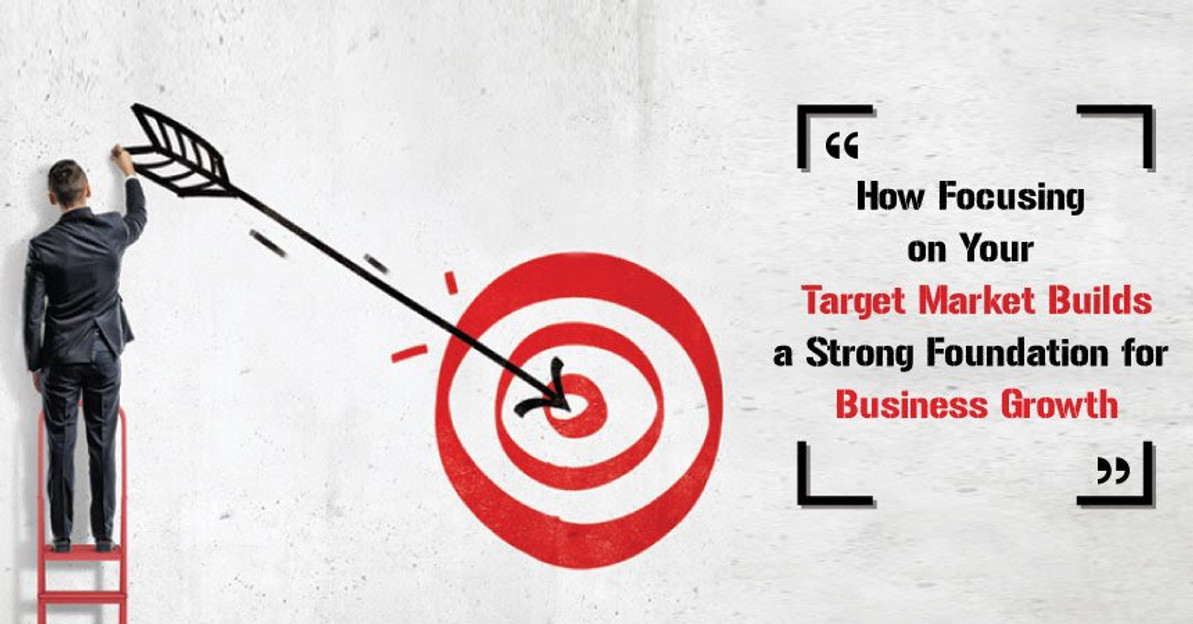Focus on Your Target Market

Targeting Everyone vs. Targeting Those Most Likely to Buy from You
There’s a way to grow your business that is affordable, efficient, and effective. It’s to focus on your target market – the people most likely to buy from you. The alternative is attempting to cast the widest net to “catch” as many customers as possible. This will lead to wasted marketing dollars, as not everyone will care about your product or service if they have no interest in it.
Think of it this way: the best fishermen know what type of fish they want to catch ahead of time. They craft the size and type of net with the specific fish in mind. They know exactly where to go to both find and catch the fish.
Similarly, with a clearly defined target market, your product or service is tailored to the needs and desires of your prospects. Taking it a step further by also defining target audiences, every detail of your marketing campaign is tailored to interests and emotions, resulting in high conversion rates and sales.
Define Your Target Market in Three Steps
A target market is a segment of potential customers who are more likely to buy a product or service from you. Once defined, your target market should impact all decisions you make as a business. The products you develop and the services you offer are to meet the needs of your target market.
All decisions on packaging and pricing are to appeal to your target market. The sales process you map out is structured around the shopping preferences of your target market. Defining your target market can be done in three steps.
Step #1: Identify the Key Benefit That Your Product or Service Provides
It might help to start with the end result: completely satisfied customers. For customers to be satisfied, they need to be given a product or service that solves their problem. What is their problem? This is what you need to figure out.
It doesn’t matter if you have the best product or service in the world if there is no one with a problem that can be solved by it. Ask yourself the questions: what are the problems you solve? What are the needs you meet? What are the desires you fulfill?
A great example of a brand selling benefits instead of features is Apple selling its first iPod. The main feature of the product was storing 1GB of MP3 files. Instead of focusing on this feature, they focused on the benefit of “1,000 songs in your pocket.” Once you clearly identify the benefits of your product or service, it becomes clear who needs them.
Step #2: Narrow Down Your Target Market
The goal is to get as specific as possible. To help do this, consider the four categories below. You might not need all of them, but it’s a good practice to think about each when defining your target market:
Geographic: a product or service may only appeal to a target market in a small geographic area. If so, there would be no point in developing content outside of the location or language spoken in the area, for example.
Demographic: personal information such as age, education, income, gender, relationship status, etc. This information might be helpful when pricing your product or service – can your target market afford the price?
Psychographics: qualitative human characteristics, such as opinions, values, interests, behaviors, attitudes, and lifestyle. These help identify a person more than demographic information. Opinions could be something as simple as preferring to exercise at home as opposed to a gym, or as complex as someone’s political preferences. Interests can be as broad as all outdoor sports or as specific as water polo.
Behavioristic: based around understanding buying behavior so you know if a customer will buy from you. This would include knowing if a customer is brand loyal and how much money they are willing to spend on a similar item to yours. Is your product a luxury item potentially bought only once a year?
Step #3: Evaluate Your Target Market Segments
Having information from any of the categories above gives you real insights into who you are selling to. Are these marketing segments worth selling to? This is the primary question you need to answer.
Here are a few more to consider:
Does your target market have enough customers to sustain your business?
Will customers buy repeatedly, or is your business model centered around new customers?
How much competition is there for your target market? If there is none, why is that?
How do you separate yourself from the competition?
You can get a great deal of information to define your target market from online research, analytics, and focus groups. If your products and services align with your target market’s needs or desires, you should find that growing your business becomes more affordable, efficient, and effective. To take it a step further, define your target audience as well.
Take It a Step Further by Defining Your Target Audience
Compared to the target market, target audience is narrower. While your target market will drive all decisions you make as a business, a target audience is simply a group of customers with the significant potential to respond in a positive way to your brand message. Tailor the messaging of a marketing campaign specifically to interests, emotions, and views of your target audience.
For example, say you have a clothing subscription service with a target market in a specific region, for a specific age group, with a specific income level. A successful campaign could be targeting an audience of Facebook or Instagram users who have expressed interest in fashion and shopping online.
How much more likely is that target audience going to view, click, share, or save an ad they see in their social media feed for your subscription service? They are very likely to convert!
Final Word
There is incredible power behind targeted advertising. In fact, targeted ads can be twice as effective as non-target ads. Following the steps above, define your target market and base all your business decisions around developing products and services to satisfy them.
Spend your marketing dollars on putting brand messages in front of your target market – they are more likely to buy from you than anyone else. The result will be incredibly satisfied customers who have overwhelmingly positive feedback.
Recent Posts
-
Top 10 Best Trade Show Displays of 2024
A well-designed trade show display can leave a lasting impact on showgoers. Here are some of the bes …Feb 7th 2024 -
7 REASONS FOR STANDING DISPLAY ADVERTISING
The world has evolved over the past few years and so have the means of advertisements. Historically, …May 9th 2022 -
Why Should You Buy Custom-printed Table Throws?
Whether you're preparing for a charity event, a trade fair, or any promotional event, you want to …Mar 28th 2022





